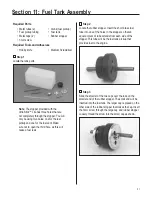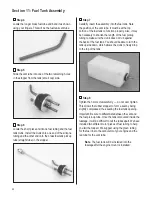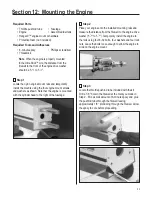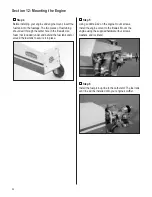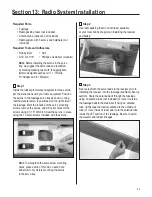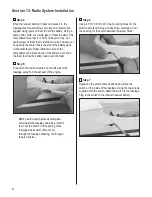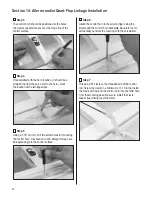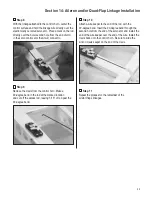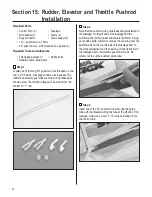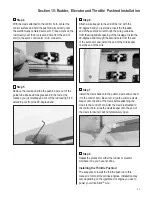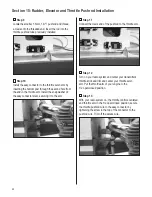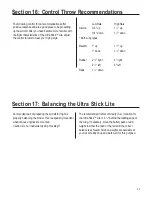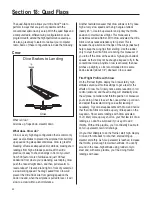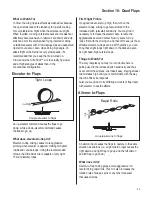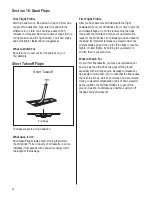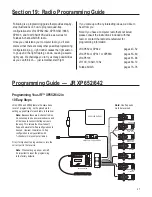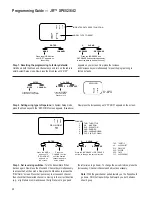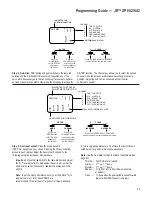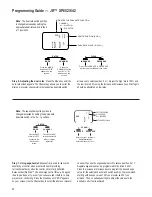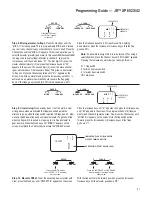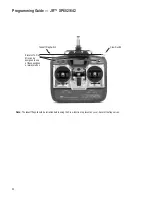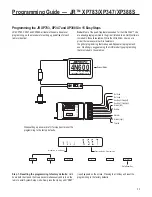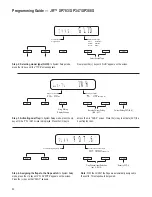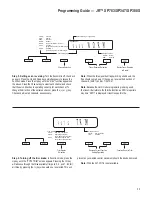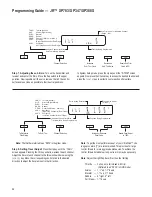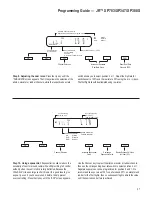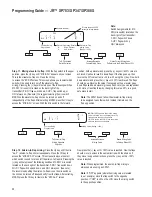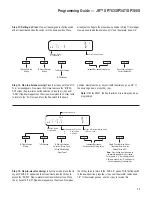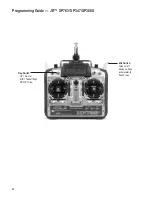
Section 18: Quad Flaps
45
What to Watch For
In Crow, the wing tips are effectively washed out because
the up ailerons reduce the tendency to tip stall, making
for very stable slow flight when the airplane is upright.
When inverted or doing outside maneuvers, this washout
effectively becomes wash-in (ailerons are down) and a tip
stall can occur. Be careful when flying inverted or doing
outside maneuvers with Crow deployed, as an unexpected
tip stall could occur. Also, when doing high angle-of-
attack flight or the Harrier at very slow speeds, it’s
recommended that you keep the Crow turned on.
Crow allows the Ultra Stick™ Lite to actually fly slower
and at higher angles of attack than in the
conventional configuration.
Elevator-to-Flaps
An up-elevator command causes the flaps to go
down, while a down-elevator command causes
the flaps to go up.
What does elevator-to-flap do?
Elevator-to-flap mixing causes more aggressive
pitching when elevator is applied, making for tighter
inside and outside loops. Using the recommended
throws, the Ultra Stick Lite is capable of very tight
15-foot diameter loops.
Tight Loops
Couple elevator to flaps
First Flight Profile
It’s a good idea to start up high, then turn on the
elevator-to-flap mixing to get accustomed to the
increased pitch (elevator) sensitivity. You may find it
necessary to increase the elevator expo to tame the
aggressiveness around center. Now try some full up
loops first with the mixing on and then off to see just how
effective elevator-to-flaps can be. With practice, you can
bring these tight loops right down to the deck and even
do tight head-high outside loops.
Things to Watch For
The only real place you may run into trouble here is
getting used to the increased pitch sensitivity and thus
over-control the airplane. Just take it easy, staying at least
two mistakes high until you’re comfortable with the way
the Ultra Stick Lite responds.
Later you may want to try differing amounts of flap travel
with elevator to see the effects.
Aileron-to-Flaps
An aileron input causes the flaps to operate in the same
direction as ailerons (i.e. a right aileron input causes the
right aileron and right flap to go up and the left aileron
and left flap to go down).
What does it do?
Aileron-to-flap mixing gives a more aggressive roll
rate for doing rapid rolls. This mix also increases the
rotation rate of snaps, spins or any other maneuver
that uses ailerons.
Rapid Rolls
Couple ailerons to flaps

